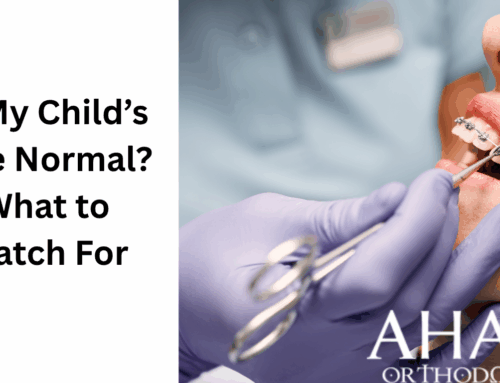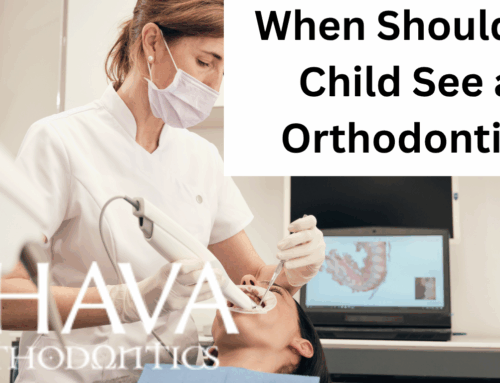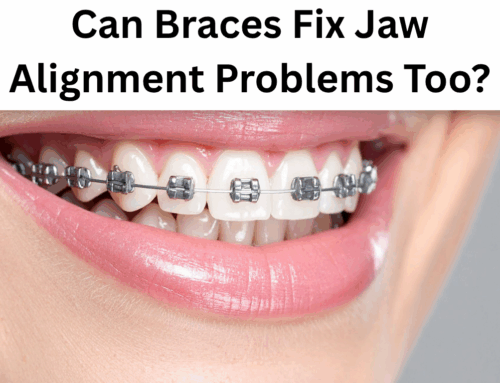Mouth breathing and teeth misalignment are often interconnected, each potentially exacerbating the other. Teeth misalignment, also known as malocclusion, can lead to mouth breathing by altering jaw structure, reducing nasal passage space, and impacting the resting posture of the tongue. Mouth breathing, in turn, may worsen dental alignment, making this a cycle with potential impacts on overall health and facial development. Understanding how teeth misalignment can cause mouth breathing—and why addressing it early is crucial—can help parents support better respiratory and dental health for their children.
The Link Between Teeth Misalignment and Mouth Breathing
Teeth misalignment and mouth breathing are frequently connected because of the way malocclusion affects the structure and function of the jaw, airway, and oral posture. Here are some of the most common ways in which misaligned teeth can lead to mouth breathing:
- Restricted Nasal Passages Due to Narrow Palate
One of the primary reasons teeth misalignment can lead to mouth breathing is that a narrow dental arch restricts space for the nasal passages. When the upper jaw is underdeveloped or too narrow, it reduces the space in the nasal cavity, making nasal breathing more difficult. This leads children to default to mouth breathing, which, while seemingly harmless, can impact dental and respiratory health over time.
- Improper Jaw Development and Position
Misaligned teeth are often a sign of underlying jaw development issues. Overbites, underbites, and other types of malocclusion can position the jaw in a way that blocks or narrows the airway. For example, an underdeveloped lower jaw can push the tongue backward into the throat, partially obstructing airflow through the nose and making it more comfortable to breathe through the mouth. The result is that children, and sometimes even adults, may switch to mouth breathing as a way to get adequate air.
- Low Tongue Posture Due to Crowded Teeth
Teeth misalignment is frequently accompanied by poor tongue posture. When the dental arches are too narrow, the tongue doesn’t have sufficient space to rest comfortably against the roof of the mouth. Instead, the tongue often rests lower in the mouth, pushing against the teeth or staying closer to the floor of the mouth. This low tongue posture obstructs the natural flow of air through the nose, encouraging mouth breathing.
When the tongue fails to rest properly against the roof of the mouth, it also doesn’t help support the widening of the palate. This narrowing can further restrict the airway, making it difficult for children to establish a habit of nasal breathing.

How Mouth Breathing Impacts Teeth Alignment
The relationship between teeth misalignment and mouth breathing isn’t one-way; mouth breathing itself can actually worsen alignment issues, creating a negative cycle. Here’s how mouth breathing affects dental alignment:
- Weakening of Jaw and Facial Muscles
When children breathe through their mouths, they are not using their facial and jaw muscles as much as they would with nasal breathing. Nasal breathing requires the tongue to press against the roof of the mouth, which naturally helps expand the palate and promote jaw growth. Without this tongue pressure, the upper arch doesn’t widen as it should, leading to crowding and misalignment as teeth come in.
- Altered Facial Growth
Chronic mouth breathing can affect the entire structure of the face, leading to a longer, narrower facial shape. This change in facial structure is due to underdeveloped jaws, which, without the support of nasal breathing, don’t expand properly. Over time, mouth breathers may develop a “long face” appearance, which is associated with misaligned teeth and poor jaw structure.
- Increased Risk of Overbite and Open Bite
When the mouth is constantly open, the upper and lower teeth are not able to settle together in a closed position, which can lead to or worsen an overbite or open bite. The constant pressure from keeping the lips apart also encourages teeth to grow in a more forward position, resulting in protruding front teeth or an open bite where the front teeth do not touch when the mouth is closed.
Addressing Mouth Breathing by Treating Teeth Misalignment
Given the complex relationship between mouth breathing and teeth misalignment, addressing the alignment of teeth and correcting oral posture can help resolve mouth breathing. Here are some approaches that work together to improve both dental alignment and breathing:
- Early Intervention with Myofunctional Therapy
Myofunctional therapy focuses on retraining the muscles of the face and mouth to support proper breathing and tongue posture. Exercises can help children learn to keep their lips closed, breathe through their noses, and position their tongues properly against the roof of their mouths. This type of therapy is particularly effective when started early, as it encourages better oral habits and promotes natural jaw growth.
- Orthodontic Treatments Like Myobrace
Myobrace is a pre-orthodontic treatment system that addresses both the alignment of teeth and the underlying causes of poor oral habits. Myobrace appliances gently guide the growth of the jaw and encourage children to breathe through their noses, promoting a wider palate and more space for teeth. By helping correct both teeth alignment and oral habits, Myobrace can resolve the root causes of mouth breathing and prevent further misalignment.
- Palate Expanders for Widening the Upper Jaw
For children with a narrow upper jaw, palate expanders are another option. These devices gradually widen the upper jaw, creating more space in the nasal passages and encouraging nasal breathing. Palate expansion can provide immediate relief for children struggling with mouth breathing and creates room for teeth to align properly, reducing crowding and malocclusion.
- Lifestyle Changes and Medical Support for Nasal Congestion
In cases where allergies or chronic congestion are contributing to mouth breathing, addressing these issues with lifestyle adjustments and medical support can help. Regular use of a humidifier, reducing exposure to allergens, and consulting with an ENT (ear, nose, and throat specialist) can relieve nasal congestion, making nasal breathing more comfortable and natural.
The Benefits of Treating Mouth Breathing and Misaligned Teeth
Correcting mouth breathing and teeth misalignment early on provides significant benefits for a child’s overall health and development, including:
- Improved Facial Aesthetics: Promoting balanced jaw growth prevents the long-face appearance and supports a well-defined jawline and facial symmetry.
- Enhanced Respiratory Health: Proper nasal breathing reduces the risk of respiratory infections, sleep-disordered breathing, and sleep apnea.
- Stable Teeth Alignment: Addressing alignment issues early on creates a more natural, stable alignment that can reduce or eliminate the need for braces or retainers.
- Better Sleep Quality and Focus: Nasal breathing improves oxygen flow, which leads to better sleep quality, improved focus, and enhanced cognitive function.
Final Thoughts
Mouth breathing and teeth misalignment are closely linked, each condition influencing the other. Addressing these issues through early intervention, proper orthodontic treatment, and habit correction can break the cycle of mouth breathing and malocclusion. At Ahava Orthodontics, we specialize in preventive approaches, like Myobrace, that not only straighten teeth but also support healthy breathing habits and facial development, setting the foundation for a lifetime of better health.




